#pp raimi
Photo

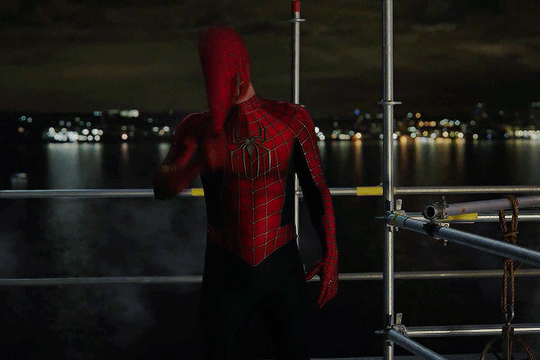
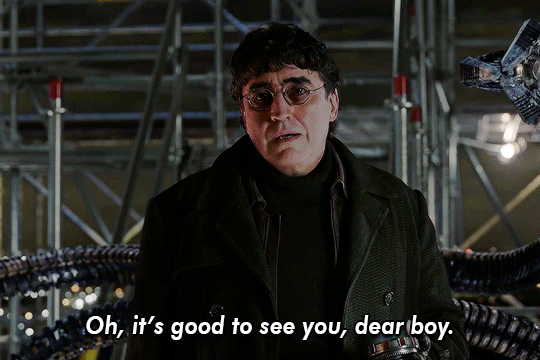


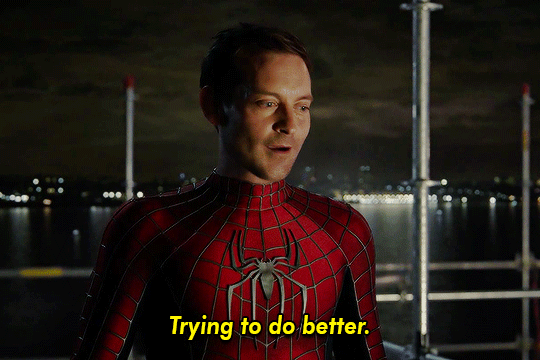
SPIDER-MAN: NO WAY HOME (2021) | dir. Jon Watts
#peter parker#Tobey Maguire#pp raimi#otto octavius#Alfred Molina#spider man#spider man no way home#no way home#marveledit#dailyspiderman#filmgifs#moviegifs#thespidersource#spidermanedit#fyeahmovies#themarvelmultiverse#chewieblog#dailyavengers#marveladdicts#spideycentral#userstream#fyspiderverse#marvellegends#mcufam#usersource#*my gifs
5K notes
·
View notes
Photo
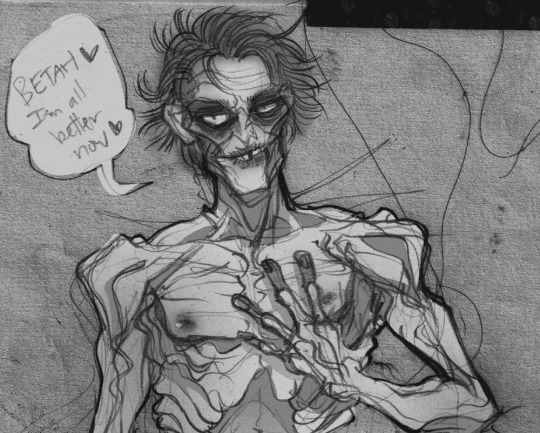

Here’s the two types of Normans I’ve been drawing for different situations. One Dafoe flavored, one cartoon/comix flavored.
Nudity and scarring under the cut, along with some headcanon text barf!
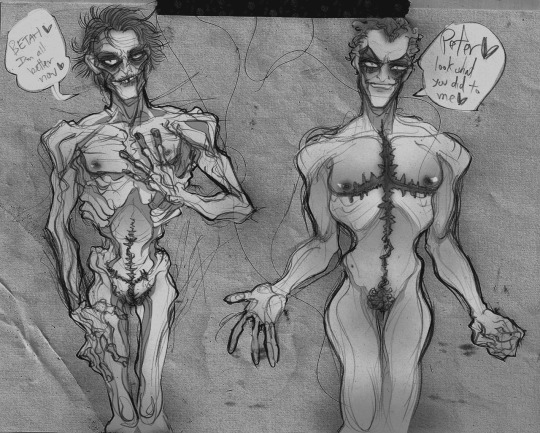
Dafoe’s Norman has such a specific body type that I love so much and have mutated into my own strange crab-person.
Shorter! 5′5″ max!
Straight auburn hair.
Large prominent ribcage of course. Very bony, especially post-mortem.
His goblin glider stabbed him in in the nuts for whatever reason (thanks Raimi), so post-mortem he needed a penectomy. This is a great way to nullify your faves AGAIN so they have no pp for your pleasure!!!
If he survived his goblin glider stabbing, Peter may have taken him to the hospital instead of to the Oscorp mcMansion. Pete and Dafoblin would be on much better terms, but still uneasy due to the whole “alter-ego that murders people and terrorizes my family” thing.
I’d love for Peter to feel guilted into being Norman’s caretaker, both physically and mentally :) Because with Harry dead, there’s literally no one else there for Norman. Help gramps sort his schizophrenia meds!
Comx/Cartoon Norman is a big conglomeration of the things I like from various drawn media. Which is to say, I LOVE spectacular spider-man’s whore-man but also the patheticness of early 60′s-70′s comix and 90′s cartoon Norman.
Tall hot GF! About 6 feet?
Curly ginger hair, a brighter orange tone. The vaunted Osborn waves!
Curvaceous body, with larger boobs and hips and more body fat. He looks a bit healthier and younger, and he needs to fill out his green goblin spandex with his slightly thick thighs.
His goblin glider stabbed him in the chest, and he canonically DOES have a cross-shaped chest scar in some appearances! Very sexy.
He retains his lil’ pp. For now. Because I’m obsessed with him having curly renaissance sculpture fig-leaf-pubes.
We all know this kind of Norman never stays dead... and Peter HATES IT!!! Very hard to forgive the guy who’s murdered and impregnated so many people close to you. This Peter/Norman relationship is very contentious... lots of hate!! The comix/cartoon Peter is much less dorky than Tobey, and much more angry, vengeful, and aggressive. But you can’t just choke him out, cuz whattabout Harry?! It’s very hard for me to conceptualize any sort of romantic relationship between the two... this Norman’s so naughty!
#norman osborn#green goblin#scarring#spidergoblin#headcanons#artistic nudity#nullification#draws#sketchbook
37 notes
·
View notes
Text
Hello, and thank you for attending my Tedx talk: Why Spider-Man 2 is a Masterpiece
1. The opening credits that recap the entirety of Spider-Man in case you missed it
2. Guess how many other marvel heroes are in the intro? Fucking zero this movie is about Spider-Man and Spider-Man alone fuck off iron man get a job.
3. Slow pan out from Kirsten Dunst’s creepy half smile that she maintains for the entirety of the movie
4. Within the first 3 fucking minutes of this movie we get the most iconic line of all time “hey, he stole that guys pizza!”
5. Peter Parker gets 30-45 seconds of uninterrupted shot of him trying to get some mops back into a janitor’s closet while Zooey Deschanel’s sister watches.
6. This movie is 2 hours of Sam Raimi beating Tobey Maguire the fuck up. He throws mops at him, he hits him in the head with a book bag, he lets James Franco bitch slap him twice in the face.
7. James Franco is in it back in the days before we knew he had a clone named Dave.
8. Harry Osborne just forces a physicist to hang out with his friend who is failing College. Also yes Peter Parker is flunking College
9. Literally Peter is flunking everything. He can’t pay rent on his shit ass apartment with a communal toilet, his aunt is losing her house, he can’t make it to a show to see Mary Jane on stage, he’s fired constantly, everyone calls him lazy and a disappointment. Even though he is the goddamn Spider-Man saving the city
10. Aunt May is old as shit. As she should be. I shouldn’t watch a Spider-Man movie and want to FUCK Aunt May and/or watch My Cousin Vinny
11. Remember when no one knew how to make super hero movies? So Sam Raimi is just fucking making it up as he goes.
12. Why is Spider-Man at this physics demonstration? Who the hell cares UNPLUG THE MACHINE SPIDER MAN
13. Back up, why is no one like “hey Otto those arms are evil as fuck”
14. Why do the ARMS HAVE AI!?
15. In the most recent Spider-Man movie the villain wants to steal weaponry to support his family. You know grounded down to earth shit. In Spider-Man 2 the villain wants to MAKE THE SUN BECAUSE HIS ROBOT ARMS TOLD HIM TO
16. There is a reason. J. Jonah Jameson has not made an appearance in another Spider-Man film. Because if it’s not JK Simmons. Than get the fuck out. I know JK won his Oscar for Whiplash but we all know it’s really for his portrayal of J. Jonah Jameson featuring such lines as “flowers? If we spend any more on this wedding you can pick the daisies off my grave!”
17. When the evil robot arms first break bad. Sam Raimi films the scene like a classic horror film and it’s FUCKING. BRILLIANT.
18. So many good screaming women in this movie. Zoom IN ON THAT SCREAMING WOMAN HELL YES.
19. Oh back back up there isn’t a scene in this movie I think where Tobey Maguire doesn’t cry. HE IS AN EMOTIONAL SPIDER MAN AND I LOVE IT
20. James Franco cries too.
21. When PP chooses to give up being SM and “Raindrops keep falling on my head” plays to him waltzing through New York CULMINATING in a freeze frame of his dork ass smiling face.
22. He saves an adorable child who, in maybe the cutest exchange I’ve ever seen, attempts to help PP up when he’s dangling from a ledge in a burning building.
23. Doc Oc dressing like a straight up cartoon pimp.
24. Baby Elizabeth Banks plays JJ’s secretary and is so young she’s adorable.
25. The stopping the subway scene is actually literally iconic. I get tense thinking about it. He’s screaming and it clearly hurts and the subway starts to crack and break and it’s AWESOME and everyone promises not to say who he is afterwards
26. Doc Oc ruining the precious moment by forcibly scooting everyone so he can steal Spider-Man to get COMIC BOOK URANIUM TO, I SAY AGAIN, MAKE THE SUN
27. “Your father only obsessed over his work” “GOOD NIGHT BERNARD”
28. The fight choreography between DOC and Spidey is actually awesome because Doc doesn’t know what the fuck he’s doing and Spider-Man is fighting 4 robot arms attached to a physicist and it’s just them punching each other and falling.
29. MJ doesn’t appear to own a bra so that’s a thrill every time she gets tossed around.
31 notes
·
View notes
Text
Proposal: Gothic Vectors and Gothic Lacuna: Gender, Reparative Love, and Unseen Agency in Tai Shani’s “Phantasmagoregasm”

Figure 1. Phantasmagoregasm Production Print. Reprinted from "Tai Shani", by Shani, T, 2019, Retrieved from https://www.taishani.com/shop/dark-continent-productions-print-set. Copyright 2019 by Tai Shani.
This is a proposal I’ve just sent this morning for the Sheffield Gothic conf. the deadline is the 9ths so still time to submit something. http://sheffieldgothicreadinggroup.blogspot.com/
The artist and 2019 Turner Prize collective winner Tai Shani has since 2014 produced artworks as part of a project called Dark Continent (DC), named for Freud's description of the sexuality of adult women (Freud, 2002, p. 90). DC takes inspiration from texts such as Christine de Pizan’s proto-feminist work “City of Women”, adapting and deviating from them to question “what consitutes the feminine” through a “messier and more agnostic model of gender that moves beyond the binarism of Pizan” (Crone, 2019, p. xi).
One artwork within DC is “Phantasmagoregasm” (Shani, 2018, 2019, n.d.), a narrative delivered by its titular character “an eighteenth-century hermaphrodite writer of gothic fiction” (Shani, 2019) which explicitly references Edgar Allen Poe’s “The Fall of The House of Usher” in its concern for the protean interrelations of bodies, objects, buildings, and affects. Shani however, offers a radical redeployment of the tropes and structures of the gothic, just as she does with those of gender.
Firstly, I draw from Eve Kosofsky Sedgwick’s concept of “reparative reading” (Sedgwick, 2002) with its calls back to Sedwick’s analysis of the gothic forms (Sedgwick, 1986), to consider how Phantasmagoregasm replaces the underpinning gothic presumption of paranoia, with queer care and love, via absense and affect. The reparative gothic position is used as a means to approach one of psychoanalyst Luce Irigaray’s rare direct addresses to art, “The Natal Lacuna” (Irigaray, 1994, 2006), and its related debates (MacCormack & McPhee, 2014; Robinson, 1994, 2006; Whitford, 1994).
Secondly, I identify how, as a reconfiguration of the gothic form of barriers and transgressions, Phantasmagoregasm is concerned with vectors and pathways for energies witnessed only through their effects, particularly the repeated literary description of rapidly moving disembodied points of view, sound waves, wind, and abstract geometry. This “Vectorial Gothic” in Shani’s work is considered through the metaphor of director Sam Raimi’s agentic camera in “The Evil Dead” movies (Campbell, 2002; Raimi, 1981, 1987; Raimi & Spiegel, 1986; Semley, 2019), in order to create another approach to Irigaray’s text, via Sedgwick and theorist Katherine Hayles writing on Poe (Hayles, 1990).
In conclusion, I consider how the queering of Gothic Desire and Gothic Space in Phantasmagoregasm readdresses structures of sexual difference and illuminates a feminist approach to art practice concerned with affect, love, and the negotiation of the unknown, or undescribable.
Bibliography:
Campbell, B. (2002). If chins could kill: Confessions of a B movie actor: an autobiography (1st St. Martin's Griffin ed). New York: LA Weekly Books for Thomas Dunne Books/St. Martin’s Press.
Crone, B. (2019). Wounds of Un-Becoming. In Our Fatal Magic (pp. vii–xxiii). S.l.: STRANGE ATTRACTOR PRESS.
Freud, S. (2002). Wild Analysis (A. Phillips, Ed.; A. Bance, Trans.). Retrieved from http://catalog.hathitrust.org/api/volumes/oclc/51108791.html
Graves, R. (2018). Tai Shani: Semiramis. Retrieved 27 November 2019, from Corridor8 website: https://corridor8.co.uk/article/tai-shani-semiramis/
Hayles, K. (1990). Chaos bound: Orderly disorder in contemporary literature and science. Ithaca, N.Y: Cornell University Press.
Irigaray, L. (1994, June). A Natal Lacuna (M. Whitford, Trans.). Women’s Art Magazine, (58), 11–13.
Irigaray, L. (2006). The Natal Lacuna. In S. Lotringer (Ed.), & B. Edwards (Trans.), More & less 3: : Hallucination of Theory (pp. 39–43). Pasadena, CA; Cambridge, MA: Fine Arts Graduate Studies Program and the Theory, Criticism and Curatorial Studies and Practice Graduate Programs, Art Center College of Design ; Distribution, MIT Press.
MacCormack, P., & McPhee, R. (2014). Creative Aproduction: Mucous and the Blank. InterAlia Special Issue: Bodily Fluids, (9), 146–164.
Raimi, S. (1981). The Evil Dead. Retrieved from http://www.imdb.com/title/tt0083907/
Raimi, S. (1987). Evil Dead II. Retrieved from http://www.imdb.com/title/tt0092991/
Raimi, S., & Spiegel, S. (1986, May 5). Evil Dead II Shooting Script, Seventh Draft. Retrieved from http://www.bookofthedead.ws/website/evil_dead_2_in-print.html
Robinson, H. (1994, December). Irigaray’s Imaginings. Women’s Art Magazine, (61), 20.
Robinson, H. (2006). Reading art, reading Irigaray: The politics of art by women. London: I. B. Tauris.
Sedgwick, E. K. (1986). The coherence of Gothic conventions. New York: Methuen.
Sedgwick, E. K. (2003). Touching feeling: Affect, pedagogy, performativity. Durham: Duke University Press.
Semley, J. (2019). Naturom Demonto. How The Evil Dead Claims Evil from Both Literature and Cinema. In R. A. Riekki & J. A. Sartain (Eds.), The many lives of The evil dead: Essays on the cult film franchise (pp. 41–50). Jefferson, North Carolina: McFarland & Company, Inc.
Shani, T. (2018). PhantasmagoregasmFinal.pdf.
Shani, T. (2019). Phantasmagoregasm. In OUR FATAL MAGIC. (pp. 139–153). S.l.: STRANGE ATTRACTOR PRESS.
Shani, T. (n.d.-a). DARK CONTINENT. Retrieved 27 November 2019, from Tai Shani website: https://www.taishani.com/dark-continent
Shani, T. (n.d.-b). DARK CONTINENT: PHANTASMAGOREGASM. Retrieved 27 November 2019, from Tai Shani website: https://www.taishani.com/darkcontinentphantasmagoregasm
Westengard, L. (2019). Gothic queer culture: Marginalized communities and the ghosts of insidious trauma. Lincoln: University of Nebraska Press.
Whitford, M. (1994, October). Woman With Attitude. Women’s Art Magazine, (60), 15–17.
#horror#feminism#queer#edgar allan poe#luce irigaray#eve kosofsky sedgwick#reparative reading#art#evil dead#voids#lacuna#vectors#trajectories
1 note
·
View note
Text
Final Annotated Bibliography
My (eventual) chosen topic for research was animated horror, and my sources covered a wide range of topics from case studies of specific film and TV examples of horror animation to general ruminations on the value of animated horror film as a whole. I chose this topic because horror is the genre that I feel most at home in as a filmmaker and I’m always trying to stay on top of what's new in the world of horror filmmaking.
My Sources:
Wells, P. (2000). ‘Animated Alternatives’, in Wells, P. The Horror Genre: From Beelzebub to Blair Witch. New York: Wallflower, pp. 101-103.
This book as a whole is one of my favourites regarding the subject of horror, as Wells goes in depth into the history of the genre and spans a broad range of aspects in a way that serves as a great starting point for anyone interested in a study of the genre. In the chapter 'Animated Alternatives', Wells makes the case that animation is the perfect medium for horror storytelling as it is the only type of filmmaking that allows for pure imaginative expression free from the physical restraints of reality. However, as this is an older source, the horror-adjacent films that have been made since its publication are not discussed and therefore its relevance to my practice in the year 2018 is somewhat limited.
Troutman, M.E. (2015) (Re)Animating the Horror Genre: Explorations in Children's Animated Horror Films . B.A. Thesis. University of Arkansas. Available at: http://scholarworks.uark.edu/etd/1090 (Accessed: 4 December 2018).
This source discusses how horror conventions are used in children's animation by examining a number of scary animated films for children from the past two decades. Troutman discusses the value of scary imagery in children's media and how certain concepts are portrayed for a young audience. Of particular interest to me was the section on how different animated horror films repurpose the themes and conventions of horror films aimed at adults in order to make them more palatable for and resonant with younger audiences. This was a very useful source for me after revisting Wells' thoughts on animated horror because as a more recent source, it featured more specific case studies that I was familiar with. This gave me a greater understanding of the context of each argument as well as a framework to build on in my own work.
Floquet, P. (2015), 'The Haunted World of El Superbeasto (Rob Zombie, 2009): An Animated Exploitation of Exploitation Cinema',Transatlantica American Studies Journal, vol. 2. Available online at https://journals.openedition.org/transatlantica/7648
This source explores Rob Zombie's The Haunted World of El Superbeasto and how through animation, Rob Zombie has endeavoured to elevate the genre conventions of exploitation cinema by framing them through a new artistic lens. This source is interesting as it shows how the film that it discusses takes two types of film (exploitation horror and adult animation) that are quite niche and often maligned, and in combining them tries to elevate the perceived artistic merits of both as well as question why mainstream critics tend to ignore these sorts of movies. I chose this source because of my personal interest in Rob Zombie as a creator (being a fan of his music if not necessarily one of his films) and my interest in using pastiche and genre hybridity in my own work. It was also valuable, I think, to include a French writer's perspective in my research because of the general difference in how animation is viewed in French-speaking and English-speaking countries.
Fu, X. (2016) HORROR MOVIE AESTHETICS How color, time, space and sound elicit fear in an audience. M.A. Thesis. Northeastern University. Available at: https://repository.library.northeastern.edu (Accessed: 4 December 2018).
This source delves into the aesthetic choices that directors utilise in horror filmmaking and the mechanics of why these aesthetic choices are effective. The author delves into semiotics, colour theory, music theory, psychology and much more to demonstrate the effectiveness of the particular aesthetic conventions that we associate with horror films. While this isn't an animation-specific source it's still very useful and outlines a lot of things I find echoed in my own practice as an animator. For any animator interested in narrative storytelling I think it's imperative to have a solid grounding in general film theory to better inform their use of film language.
Jones, S. (2010) ‘Implied...or implode? The Simpsons' carnivalesque Treehouse of Horror’. Animation Journal, vol. 18. pp. 56-79.
This source focuses in specifically on The Simpsons' Treehouse of Horror episodes which air around Halloween every year. Jones explores the subversive nature of animation and how the use of horror tropes in the Halloween specials further pushes the show's tone into what he refers to as 'carnival grotesque' as opposed to the more subdued and realistic by comparison episodes that make up the show's main canon. This source is a good example of the nature of horror as a playground for writers and artists wanting to explore taboo topics that they and their audience may not otherwise be comfortable with. The subversive and disruptive aspect of horror as a genre is part of the reason why I'm so drawn to it as a creator and that's why I found this article so valuable as a source.
Flaig, P. (2013), 'Life driven by death: animation aesthetics and the comic uncanny', Screen, vol. 54, no. 1. pp. 1-19.
This source discusses another aspect that I find myself exploring frequently in my own work and which I see explored in a lot of work that influences me- the relationship between comedy and fear. Comparing animated scenes of comedic terror and comparing them to live-action horror directors like Sam Raimi, Flaig defines the 'comic uncanny' as a type of humour driven by fear and/or disorientation in the audience, in the same way that the Freud's notion of the uncanny originally referred to the subtle anxiety brought about by confusing, dissonant or disorienting stimuli. This notion of the comic uncanny in animation was useful to me for the purpose of contextualising and identifying a large part of my practice- many of my animations use horrific and confusing imagery for comedic effect, because my own natural response to being sufficiently confused or horrified is to start laughing. Therefore this source is useful for self-reflection and understanding the context of my work in the larger world of animation.
Smail, C. 1 November 2013. Colour in Horror Films. [Online]. [3 December 2018]. Available from: https://scene360.com/movies/49400/colour-in-horror-films/
This article provides a variety of examples throughout film history of horror movies that have made extremely effective use of colour. While this is, again, not an animation-specific source I think the use of bright and stylistic colour choices is a natural link between horror and animation and I think this source does a lot to outline how vibrant aesthetic decisions don't necessarily take away from the atmosphere in a film designed to terrify their audiences.
Allen, S. 2010. ‘Bringing the Dead to Life: Animation and the Horrific’. In: Hessel, S & Huppert, M eds. Fear Itself: Reasoning the Unreasonable. New York: Rodopi, pp. 87-102
This essay explores the gothic themes present in animation, in particular the films Corpse Bride and Monster House. Allen discusses the repurposing of horror conventions and the use of aesthetics to heighten the atmosphere in both films, as well as how each film approaches and portrays death and loss. This source narrows down and solidifies ideas brought up in some of the other sources I found in my research and goes more in depth with specific film case studies.
Hutchings, P. 2012. ‘Resident Evil? The Limits of European Horror: Resident Evil vs Suspiria’. In: Allmer, P, Brick, E & Huxley, D eds. European Nightmares: Horror Cinema in Europe Since 1945. New York: Wallflower, pp. 13-22
The section I focused on in this book compares Resident Evil and Suspiria in an attempt to define the conventions of European Horror as opposed to American horror. The author outlines the things about Suspiria that, in their opinion, define it as European, including unconventional narrative structure, and the film's artistic and unusual use of both colour and sound design. This is contrasted with Resident Evil, a film that was made by Europeans for an international audience, which they define as being divorced from its geographic roots by use of more 'Hollywood' style filmmaking. Hutchings also touches on the 'video nasty' phenomenon later in his essay and posits that the harsh film censorship laws in many European countries in the 20th century contributed to the development of the distinct 'eurohorror' aesthetic. I included this source because it both touches on the aesthetic identity of different types of horror, which is useful to me as an animator, and touches on the subversive and counterculture elements of horror fandom, which I just find fascinating in general.
Hawley, E. (2015), 'Re-imagining Horror in Children's Animated Film', M/C Journal, vol. 18. no. 6. Available online at http://journal.media-culture.org.au/index.php/mcjournal/article/view/1033
This article explores horror tropes in children's animation and how the use of these tropes challenge the prevalent cultural ideas of childhood and innocence. The author raises the question of whether or not films like Frankenweenie or Paranorman need to be thought of as 'for' either children or adults, as well as the question of why, as a society, we tend to consider horror to be just for adults and animation to be just for children. The question of who a particular film is 'for' is a complex one that most filmmakers feel they need to answer in order to find their audience, but in the world of western (particularly english-speaking) animation, the answers that question can become more complicated because inevitably any animation risks being viewed as 'for children'. This is why I included this source in my bibliography, since it addresses an issue that will inevitably be relevant for me in the future.
0 notes
Photo
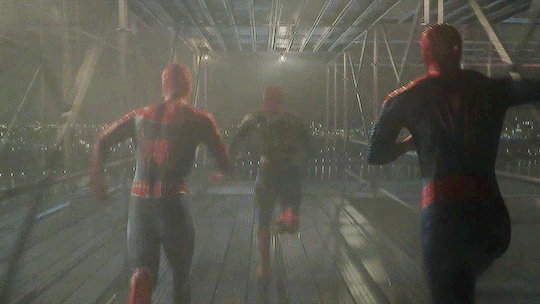

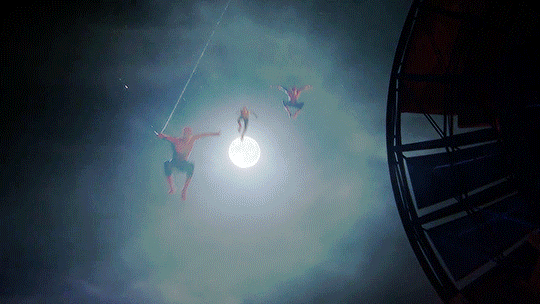
SPIDER-MAN: NO WAY HOME (2021) | dir. Jon Watts
#tom holland#andrew garfield#Tobey Maguire#peter parker#pp webb#pp raimi#spider man#spider man no way home#no way home#marveledit#dailyspiderman#filmgifs#moviegifs#thespidersource#spidermanedit#fyeahmovies#themarvelmultiverse#chewieblog#dailyavengers#marveladdicts#spideycentral#userstream#fyspiderverse#marvellegends#mcufam#usersource#*my gifs
3K notes
·
View notes
Photo

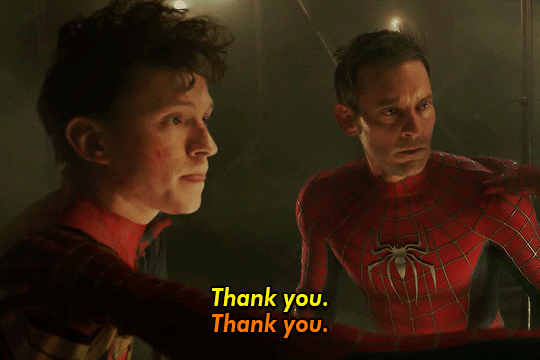

SPIDER-MAN: NO WAY HOME (2021) | dir. Jon Watts
#andrew garfield#peter parker#tom holland#tobey maguire#pp webb#pp raimi#spider man#spider man no way home#no way home#marveledit#dailyspiderman#filmgifs#moviegifs#thespidersource#spidermanedit#fyeahmovies#themarvelmultiverse#chewieblog#dailyavengers#marveladdicts#spideycentral#userstream#fyspiderverse#marvellegends#mcufam#usersource#*my gifs
3K notes
·
View notes
Photo



SPIDER-MAN: NO WAY HOME (2021) | dir. Jon Watts
#ned leeds#jacob batalon#Tobey Maguire#peter parker#pp raimi#marveledit#dailyspiderman#filmgifs#moviegifs#thespidersource#spidermanedit#fyeahmovies#themarvelmultiverse#chewieblog#dailyavengers#marveladdicts#spideycentral#userstream#fyspiderverse#marvellegends#mcufam#usersource#*my gifs
748 notes
·
View notes